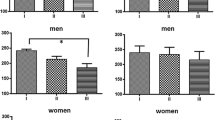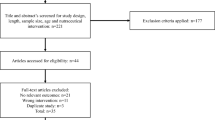Abstract
The effect of cold-restraint stress on the antioxidant enzymes of the rat gastric mucosa was studied with a view to finding out their role in stress induced gastric ulceration. Histological examination revealed stress induced extensive damage of the surface epithelial cell with lesions extending upto submucosa in some cases. Stress causes time-dependent increase in histamine and pepsin content but decrease in acid content of the gastric fluid with the progress of ulceration (ulcer index) for two hours. The tissue lipid peroxidation was significantly increased as evidenced by accumulation of malondialdehyde. Since lipid peroxidation results from the generation of reactive oxygen species, stress effect was studied on some antioxidant enzymes such as superoxide dismutase, peroxidases and prostaglandin synthetase as a function of time. The time dependent increase in stress ulcer correlates well with the concomitant increase in superoxide dismutase activity and decrease in peroxidase and prostaglandin synthetase activity. This creates a favourable condition for accumulation of endogenous H2O2 and more reactive hydroxyl radical (OH·). Administration of antioxidants such as reduced glutathione or sodium benzoate prior to stress causes significant decrease in ulcer index and lipid peroxidation and protection of gastric peroxidase activity suggesting the involvement of reactive oxygen species in stress induced gastric ulceration. This is supported by thein vitro observation that OH· can also inactivate peroxidase and induce lipid peroxidation. As prostaglandin is known to offer cytoprotection, stress-induced loss of prostaglandin synthetase activity appears to aggravate the oxidative damage caused by reactive oxygen species.
Similar content being viewed by others
Abbreviations
- ROS:
-
reactive oxygen species
- GPO:
-
gastric peroxidase
- SOD:
-
superoxide dismutase
- MDA:
-
malondialdehyde
- GSH:
-
reduced glutathione
- TCA:
-
trichloroacetic acid
References
Miller TA: Mechanisms of stress-related mucosal damage. Am J Med 83: 8–14, 1987
Senay CE, Levine RJ: Synergism between cold and restraint for rapid production of stress ulcers in rats. Proc Soc Exp Biol Med 124: 1221–1223, 1967
Garrick T, Buack S, Bass P: Gastric motility is a major factor in cold restraint-induced lesion formation in rats. Am J Physiol 250 (Gastronintest Liver Physiol): G191–G199, 1986
Cho CH, Ogle CW, Dai S: Acute gastric ulcer formation in response to electrical vagal stimulation in rats. Eur J Pharmacol 35: 215–219, 1976
Cho CH, Ogle CW: Cholinergic-mediated gastric mast cell degranulation with subsequent histamine H1 and H2-receptor activation in stress ulceration in rats. Eur J Pharmacol 55: 23–33, 1979
Hase T, Moss BJ: Microvascular changes of gastric mucosa in the development of stress ulcer in rats. Gastroenterology 65: 224–228, 1973
Kitagawa H, Fujiwara M, Osumi Y: Effect of water immersion stress on gastric secretion and mucosal blood flow in rats. Gastroenterology 77: 298–302, 1979
Perry MA, Wadhawa S, Parks DA, Pickard W, Granger DN: Role of oxygen radicals in ischemia-induced lesions in the cat stomach. Gastroenterology 90: 362–367, 1986
Itoh M, Guth OH: Role of oxygen derived free radicals in hemorrhagic shock induced gastric lesions in the rat. Gastroenterology 88: 1162–1167, 1985
Mizui T, Doteuchi M: Lipid peroxidation: a possible role in gastric damage induced by ethanol in rats. Life Sci 38: 2163–2167, 1986
Hernandez DE, Walker CH, Mason GA: Influence of thyroid states on stress gastric ulcer formation. Life Sci 42: 1757–1764, 1988
Bhattacharjee M, Chakraborty T, Banerjee RK: Dissociation of gastric acid and pepsinogen secretion in response to mercaptomethylimidazole — a new secretory compound. Biochem Pharmacol 40: 1095–1101, 1989
Shore PA, Burkhalter A, Cohn VH: A method for the fluorometric assay of histamine in tissues. J Pharmacol Exp Ther 127: 182–186, 1958
Buege JA, Aust SD: Microsomal lipid peroxidation. Methods Enzymol 52: 302–310, 1978
De SK, Banerjee RK: Purification, characterization and origin of rat gastric peroxidase. Eur J Biochem 160: 319–325, 1986
Bandyopadhyay U, Bhattacharya D, Chatterjee R, Banerjee RK: Localization of gastric peroxidase and its inhibition by mercaptomethylimidazole, an inducer of gastric acid secretion. Biochem J 284: 305–312, 1992
Lawrence RA, Burk RF: Glutathione peroxidase activity in selenium-deficient rat liver. Biochem Biophys Res Commun 71: 952–958, 1976
McCord JM, Fridovich I: Superoxide dismutase. An enzymic function for erythrocuprein (Hemocuprein). J Biol Chem 244: 6049–6055, 1969
Van Der Ouderaa FJ, Buytenhek M, Nugteren DH, Van Dorp DA: Purification and characterization of prostaglandin endoperoxide synthetase from sheep vesicular glands. Biochim Biophys Acta 487: 315–331, 1977
Lowry OH, Rosebrough NJ, Farr AL, Randall RJ: Protein measurement with the folin phenol reagent. J Biol Chem 193: 265–275, 1951
Cho CH, Ogle CW: The pharmacological differences and similarities between stress and ethanol induced gastric mucosal damage. Life Sci 51: 1833–1842, 1992
Blake DR, Allen RE, Lunee J: Free radicals in biological systems a review oriented to inflammatory process. Br Med Bull 43: 371–385, 1987
Grisham MB, Hernandez LA, Granger DN: Xanthine oxidase and neutrophil infiltration in intestinal ischemia. Am J Physiol 251: G567–G574, 1986
Ford TF, Grant DAW, Austen BM, Taylor JH: Intramucosal activation of pepsinogens in the pathogenesis of acute gastric erosions and their prevention by the potent semisynthetic amphipathic inhibitor pepstatinyl-glycyl-lysyl-lysine. Clin Chim Acta 145: 37–47, 1985
Freeman BA, Crapo JD: Biology of disease. Free radicals and tissue injury. Lab Invest 47: 412–426, 1982
Fridovich I: Biological effects of superoxide radical. Arch Biochem Biophys 247: 1–11, 1986
Stevens JB, Autor AP: Induction of superoxide dismutase by oxygen in neonatal rat lung. J Biol Chem 252: 3509–3514, 1977
Ohmori H, Komoriya, Azuma A, Kurozumi S, Oto YH: Xanthine oxidase induced histamine release from isolated rat peritoneal mast cells: involvement hydrogen peroxide. Biochem Pharmacol 28: 333–334, 1979
Boyd SC, Sasame HA, Boyd MR: Gastric glutathione depletion and acute ulcerogenesis by diethylmaleate given subcutaneously to rats. Life Sci 28: 2987–2992, 1981
Boyd SC, Sasame HA, Boyd MR: High concentrations of glutathione in glandular stomach: possible implications for carcinogenesis. Science 205: 1010–1012, 1979
Bast A, Haenen GRMM, Doelman CJA: Oxidants and anti-oxidants: state of the art. Am J Med 91 (3C): 2S–13S, 1991
Mizui T, Sato H, Hirose F, Doteuchi M: Effect of anti-peroxidative drugs on gastric damage induced by ethanol in rats. Life Sci 41: 755–763, 1987
Cochran T, Stefanko J, Moore C, Saik R: Dimethylsulfoxide protection against gastric stress ulceration. Cur Surg 40: 435–437, 1983
Hirota M, Inoue M, Ando Y, Morivo Y: Inhibition of stress-induced gastric mucosal injury by a long acting superoxide dismutase that circulates bound to albumin. Arch Biochem Biophys 280: 269–273, 1990
Fridovich I: Quantitative aspects of the production of superoxide anion radical by milk xanthine oxidase. J Biol Chem 245: 4053–4057, 1970
Halliwell B, Gutteridge JMC: Role of iron in oxygen radical reaction. Methods Enzymol 105: 47–56, 1984
Stadtman ER, Oliver CN: Metal catalyzed oxidation of proteins. J Biol Chem 266: 2005–2008, 1991
Miller TA: Protective effects of prostaglandins against gastric mucosal damage: Current knowledge and proposed mechanisms. Am J Physiol 235 (Gastrointest Liver Physiol): G601–G623, 1983
Whittle BJR: Temporal relationship between cyclooxygenase inhibition as measured by prostacyclin biosynthesis and the gastrointestinal damage induced by indiomethacin in the rat. Gastroenterology 80: 94–98, 1981
Author information
Authors and Affiliations
Rights and permissions
About this article
Cite this article
Das, D., Banerjee, R.K. Effect of stress on the antioxidant enzymes and gastric ulceration. Mol Cell Biochem 125, 115–125 (1993). https://doi.org/10.1007/BF00936440
Revised:
Accepted:
Issue Date:
DOI: https://doi.org/10.1007/BF00936440




